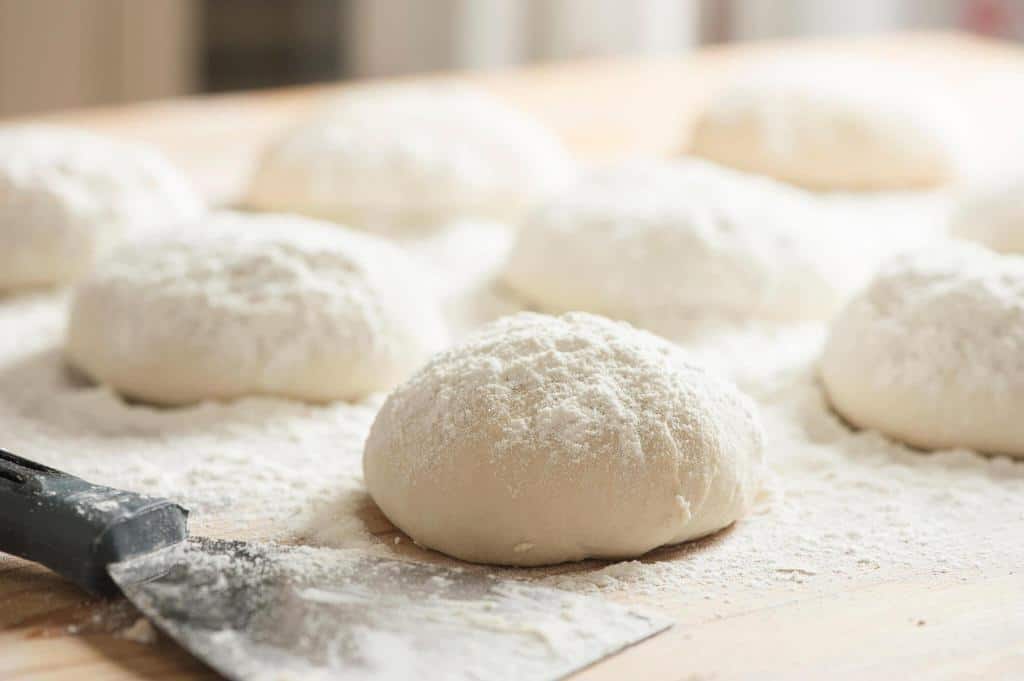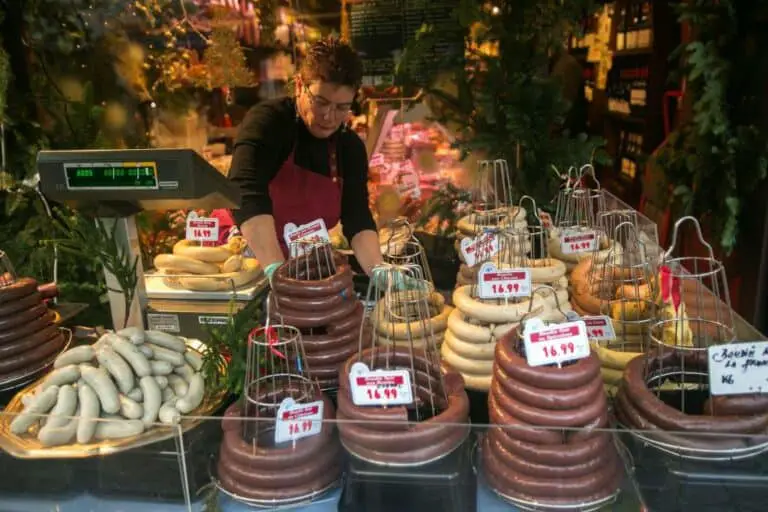Can Expired Pizza Dough Make You Sick?

There is one important part of making homemade pizza that gets all the doughy attention: pizza dough. This versatile food-making base is used to make delicious pies that look great on dinner tables and make people drool. But while we are baking, we can not forget to pay attention to a small but important thing: the date that is quietly stamped on that humble ball of dough.
Pizza dough, which is just flour, water, yeast, and salt, has the power to change things when it is made by skilled hands, but it goes bad quickly and can not be saved. Like any other food, this normal mixture can change from a flexible starter to a cause of stomach problems if not used in time.
Understanding why pizza dough goes bad early is not just fun food science trivia. It is a key part of safe home cooking. It protects both health and flavor.
Come with us. We will go beyond interesting food facts and into the world where taste and touch meet. Expiration dates are vital for keeping more than just palates alive.
Finding out why pizza dough goes bad matters to us. It gives us the info we need to keep our opinions (and stomachs) from going bad. It also feeds our love of all things kitchen-related.
What Happens When Pizza Dough Expires?
When pizza dough reaches its expiration date, it undergoes gradual changes in texture, flavor, and quality. The expiration date indicates the point at which the dough is no longer at its peak freshness.
As time passes, the yeast in the dough continues to ferment, producing carbon dioxide gas that causes the dough to rise. However, the yeast’s activity slows down as the dough ages, resulting in a denser and less flavorful dough.
Despite these changes, expired pizza dough is unlikely to make you sick if stored properly and free from mold. The ingredients in pizza dough, like flour, water, yeast, and salt, are not dangerous when eaten after they expire. However, it’s essential to check the dough for any signs of mold, off smells, or slimy textures before using it in your recipe.
Can Expired Pizza Dough Make You Sick?

While expired pizza dough may not taste as good as fresh dough, it is unlikely to make you sick. The ingredients in pizza dough, such as flour, water, yeast, and salt, are not inherently dangerous when consumed past their expiration dates. However, there are some factors to consider:
- Mold: If you see any signs of mold on the dough, such as green or fuzzy spots, it’s best to discard it. Mold can produce mycotoxins, which can cause illness if ingested.
- Smell and Texture: Expired dough may develop an off smell or slimy texture. If the dough smells sour or has a slimy feel, it’s best to err on the side of caution and discard it.
- Allergies and Sensitivities: Some individuals may be more sensitive to expired foods. This is especially true if they have allergies or sensitivities to certain ingredients. If you have any concerns, it’s best to consult with a healthcare professional.
| Read: Perfect Homemade Pizza: What Cheese Should I Use? |
Why You Shouldn’t Risk It: The Hidden Dangers of Expired Pizza Dough
While expired food isn’t always a cause for panic, when it comes to pizza dough, caution is key. Consuming expired or improperly stored pizza dough can pose serious health risks that are best avoided.
One of the primary concerns with expired pizza dough lies in the potential growth of harmful bacteria such as E. coli or Salmonella. The dough lingers too long. Moisture and temperature swings make it a perfect breeding ground for these pathogens.
It may start innocently as a quick homemade pizza night. But, it could lead to stomach pain or worse if you eat contaminated dough. To safeguard your health and savor every bite without worry, keep an eye out for telltale signs that your pizza dough has bid adieu to its freshness.
When assessing if your pizza dough has gone bad, trust your senses. They often reveal what expiration dates cannot say. A sour smell or off-putting odor emanating from the once-promising blob of yeast and flour signals trouble ahead; this olfactory warning sign should not be ignored lightly.
Visual cues matter too. Mold spots dotting the surface or any unusual discoloration show bacterial growth gone wild in that seemingly innocent mound of dough on your countertop.
Tips for Properly Handling and Storing Pizza Dough
Handling fresh or homemade pizza dough the right way is important for keeping it safe and in good shape. If you’ve whipped up a batch of dough but don’t plan on using it immediately, knowing how to store it correctly can make all the difference. To maintain optimal freshness, refrigerate the dough in an airtight container or tightly wrap in plastic wrap. This helps prevent any exposure to air that can dry out the dough and alter its texture.
For longer-term storage, freezing pizza dough is a great option. Simply portion the dough into individual servings, wrap them tightly in plastic wrap or aluminum foil, and place them in a freezer-safe bag. Before freezing, ensure that excess air is removed from the packaging to prevent freezer burn. When you’re ready to use frozen pizza dough, allow it to thaw overnight in the fridge. This gives the best results.
Now, how do you know if stored pizza dough is still safe to use? Keep an eye out for signs of spoilage, such as an off smell or unusual discoloration. If the dough looks greyish or has dark spots, it’s best not to take any chances. Trust your senses; if something seems off about the stored dough, discard it rather than risking foodborne illness.
Follow these simple rules for handling and storing pizza dough well. Then, you can enjoy safe, tasty homemade pizzas.
Thawing Frozen Pizza Dough Safely
When it comes to using frozen pizza dough, ensuring a safe thawing process is crucial for both the texture of your crust and your health. To unlock the full potential of your dough without compromising safety, follow these best practices.
Begin by transferring the frozen dough from the freezer to the refrigerator, allowing it to gradually thaw overnight. This slow and steady method prevents temperature shock that can affect yeast activity and overall dough quality.
Once your pizza dough thaws in the fridge, resist the urge to speed up the process with heat. Don’t use methods like microwaving or leaving it out at room temperature for a long time. Instead, let the dough sit at room temperature for about 30 minutes before shaping and baking. This gentle transition preserves the integrity of your dough while reducing any food safety risks associated with rapid temperature changes.
Prioritizing proper thawing techniques elevates your pizza-making experience. It also guards against foodborne illnesses from mishandled ingredients.
Tips for Storing Pizza Dough
To prolong the shelf life of your pizza dough and reduce the risk of spoilage, consider the following tips:
- Store dough in an airtight container or plastic wrap to prevent it from drying out or absorbing odors from the fridge.
- Keep dough in the refrigerator rather than the freezer, as freezing can affect the texture of the dough.
- Use expired dough for other recipes, such as flatbreads or calzones, where the texture of the dough is less critical.
Conclusion: Safeguard Your Health with Proper Food Handling
We are finishing our discussion on the risks of eating expired pizza dough. It is crucial to follow proper food handling in cooking. Whether you are a seasoned chef or a home cook, understanding the effects of using old ingredients can truly protect your health.
You prioritize food safety. You are diligent about checking expiration dates on perishable items like pizza dough. This proactive steps minimize the risk of foodborne illnesses.
Remember, when it comes to your kitchen creations, freshness matters more than mere flavor. The next time you plan to make homemade pizzas or any other dishes with perishable ingredients, pause for a moment to check those expiration labels.
Don’t compromise on quality or cut corners when it comes to what goes into your meals. Stay vigilant. Stay informed. And most importantly, stay healthy. Do this by following best practices for storing and using food items safely. Your taste buds may thank you for experimenting with flavors. But, your body will surely appreciate the care taken in maintaining perfect food safety.






